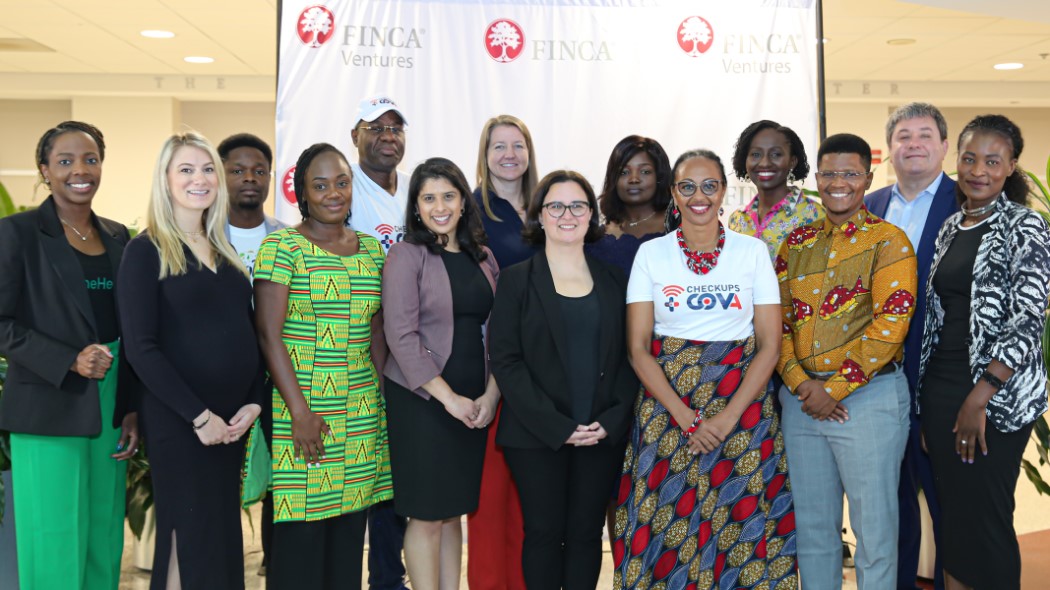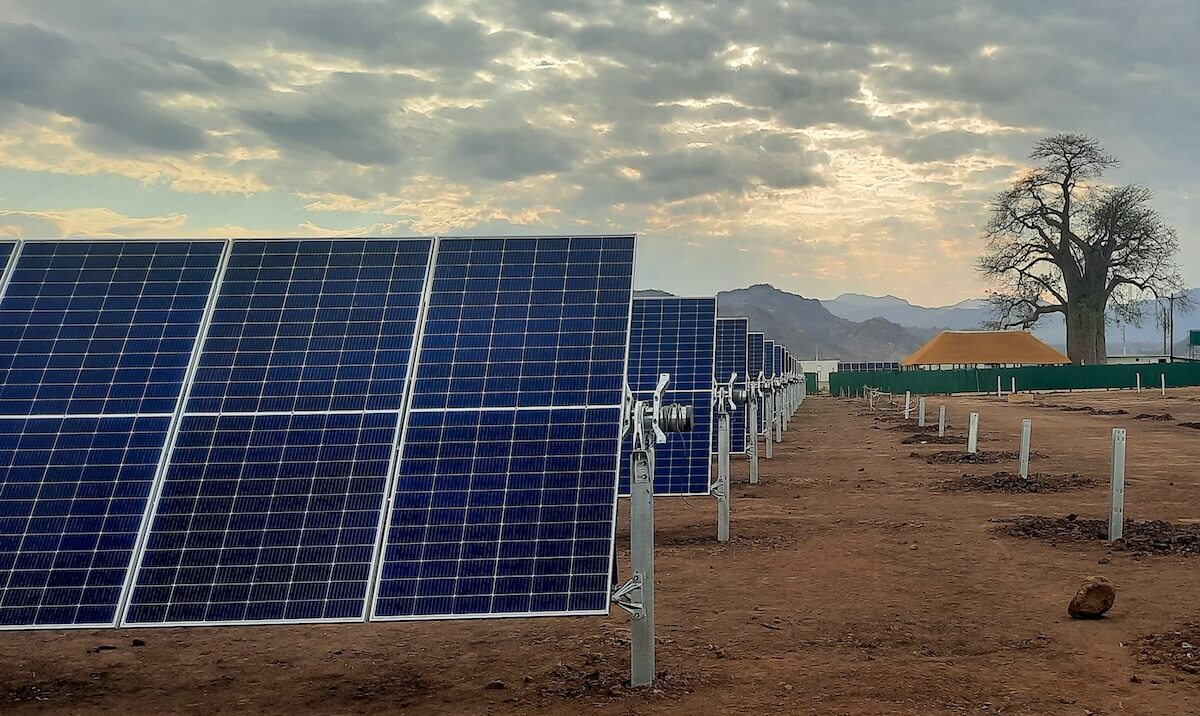#Featured: Open Mic
Impact investors rally behind OPIC. The Overseas Private Investment Corp. has championed impact investing and multiplied meager foreign-aid dollars by helping U.S. companies create jobs, increase exports, and deliver positive economic and environmental impact in emerging markets. OPIC is a self-sustaining government agency that makes money and has reduced the federal deficit by nearly $4 billion in the past decade. For every dollar it spends, OPIC returns about $8.
The Trump administration’s budget proposal calls for OPIC’s elimination. What sense does it make to end OPIC’s successful efforts to expand market-based solutions to global poverty?
Read why Rick Beckett of Global Partnerships thinks OPIC should be expanded, not eliminated:
Expanding OPIC is Good for America and the World
#Dealflow: Follow the Money
Artscape raises $21.4 million to build art entrepreneurship hub in Toronto. The “creative economy” gets little recognition from investors, including the impact sector. A recent report from the Calvert Foundation and Upstart Co-Lab suggests the creative sector needs $1.5 billion in investment over the next five years in the U.S. alone. Here comes Canada. A hub under construction in Toronto’s East Bayfront area is intended to provide artists and designers with the business skills to succeed in their crafts. “It is becoming harder and harder to sustain a career as an artist or designer,” said Tim Jones, CEO of Artscape, a real estate-based impact investor. Financing for the project includes $14 million in capital funding from Canadian Heritage; the Ontario Ministry of Research, Innovation and Science; a group of philanthropists; and $4.5 million in community bonds. The hub is part of the Daniels Waterfront — City of the Arts, a 1.3 million square foot arts-and-culture revitalization project. (Listen to ImpactAlpha’s ROI podcast “Artists as Social Entrepreneurs” with Upstart Co-Lab founder Laura Callanan.)
MarcoPolo Learning attracts $8.5 million for early-education apps. The New York startup launched in 2012 with a vision of universal access to early childhood education. MarcoPolo offers five mobile apps for teaching kids about the natural world through games. Last year, it introduced a series of short science videos for three- to seven-year-olds called The Polos. The company says it reaches five million students in 150 countries. Boat Rocker Ventures, the venture capital arm of television studio Boat Rocker Media, led the Series A round. Horizons Ventures, Seedcamp and DST Global also participated. The funding will help expand video content and distribution through Boat Rocker’s channels. The education technology market is hot (see, “TPG’s Rise Fund comes out of the gates with a big edtech investment in EverFi”).
GeNNex will train Kenyan slum residents to build solar lamps. The London-based company plans to open a manufacturing plant in Kenya and a training program in Kibera, Nairobi’s largest slum. The goal: train workers to build and maintain the company’s lamps and chargers. GeNNex hopes to expand to Eldoret, Narok, and Nakuru as well. The company is moving to deepen its social impact beyond product sales. “A huge focus of our work is on empowering communities,” said Nathaniel Peat, a GeNNex co-founder, who said the training program will help “create a workforce that supports commercial sales, while providing education, learning and jobs.” Adoption of off-grid solar products helped boost Kenya’s electricity-access rate from 27 percent in 2013 to 60 percent last year. Prices have dropped and quality has increased, but very few small-scale solar devices are made in Africa. Most are manufactured and imported from China.
Aspiration app helps consumers track the impact of their spending choices. The online bank has launched a new app that quantifies the social and environmental effects of shoppers’ purchases. The goal is to empower U.S. consumers, who spend $36 billion every day, to base decisions on companies’ track records on employee wages, commitment to renewable energy and other factors. Aspiration’s app analyzes more than 75,000 data points from 5,000 companies and assigns each company a score from one to 100 on its social and environmental performance. HiP Investor is one of the sources of the ratings, data and metrics that power the app, which also includes information from SEC filings, Thomson-Reuters and reports volunteered by the companies themselves. “There has been a huge crying demand from people for a long time to be able to score their spending,” Andrei Cherny, Aspiration’s CEO told Wired. Aspiration is aiming to cultivate consumer awareness: Users can applaud or shame companies by tweeting directly from the app.
See all of ImpactAlpha’s recent #dealflow.
#Signals: Ahead of the Curve
Shareholder resolutions are one of the only ways for investors to have impact on public companies. And they’re under threat. The Trump administration and legislators are pushing a proposal to make it harder for shareholders to get a vote on issues of concern, including corporate responsibility and sustainability. The legislation would require shareholders to own one percent of a company’s shares for three years in order to propose resolutions, a sharp increase from today’s threshold of $2,000 in shares. The New York State Common Retirement Fund, called it “outrageous and inequitable that we would not be able to make requests of corporate boards through shareholder resolutions,” according to New York State Comptroller Thomas DiNapoli, a trustee. A report from Ceres said shareholder proposals are an “essential and cost-effective tool for investors to protect and enhance the value of their investments.” Corporate opposition to shareholder proposals are a reflection of their growing popularity: last year, 61 percent of resolutions that made it to a vote received 25 percent or more support, up from 31 percent in 2000. In 2016, out of 1,000 proposals filed, 400 targeted social and environmental issues, while more than 500 dealt with governance.
How to build a total impact portfolio. Carving out $10 million to do a few impact deals is no longer enough for many investors, says William McCalpin, managing partner of Athena Capital Advisors, an investment advisor in Lincoln, Mass., with $5.5 billion under management. “Institutions want to drive this through their whole portfolio,” McCalpin told ImpactAlpha. “How do you construct a portfolio that does that?” Athena has taken a crack with Building Impact Portfolios, which deconstructs the planning, execution and feedback phases of impact portfolio construction and advances Modern Portfolio Theory, the 65-year old framework for weighing financial risk and returns. Athena’s guidelines do not offer step-by-step advice (even the examples provided within the framework are fictional), but do include a classification of impact themes and “preparatory due diligence” questions for investors in fixed-income, private debt, public equities and other asset classes. Athena’s effort adds to a growing body of work around impact portfolio management. The Hong Kong-based RS Group has published an accounts of its approach, while the 100% Impact Network from Toniic has tools to help guide members’ investment strategies.
Takeaways from the Impact Capitalism Summit — in verse. ImpactAlpha’s Jerome Tagger waxes poetic (literally) about this week’s conference in Chicago. Check it out:
Reason but no rhyme: Takeaways from the Impact Capitalism Summit in free verse
#2030: Long-Termism
Creating hundreds of resilient cities by rethinking infrastructure for the 21st century. Cities will house 70 percent of the world’s population by 2050 and require urban infrastructure investment of at least $3.7 trillion per year. The only way to meet the challenges of soaring population growth and climate change is to build infrastructure that meets both social and environmental needs. “We must design and implement strategies that articulate the benefits of nature — economically, socially and as a critical piece of building future resilience,” argues Elizabeth Yee of the Rockefeller Foundation’s 100 Resilient Cities initiatives.
The city of El Paso, Texas, for example, is making the business case (with help from the consulting firm Earth Economics) for preserving and restoring its surrounding desert land. In Medellín, Colombia, early-warning alerts for potential natural disasters and “community risk management” can build social cohesion in crime-intense neighborhoods. In New York, Dutch engineering firm Arcadis is working with Rebuild by Design on a U-shaped flood protection zone around Manhattan that also provides parks and public spaces. Such landscapes can be more effective than traditional flood control measures.
“Traditional models of conservation and regulation alone cannot catalyse the kind of systemic behavioural change that will renew our relationship with the environment,” Yee writes. “Rather than endlessly plugging proverbial holes in concrete walls, we can help nature synchronise with such economic needs.”
Onward! Please send any news and comments to [email protected].
https://medium.com/media/7032d7ce31c1fd9c4f3580c9de3e9e77/href











